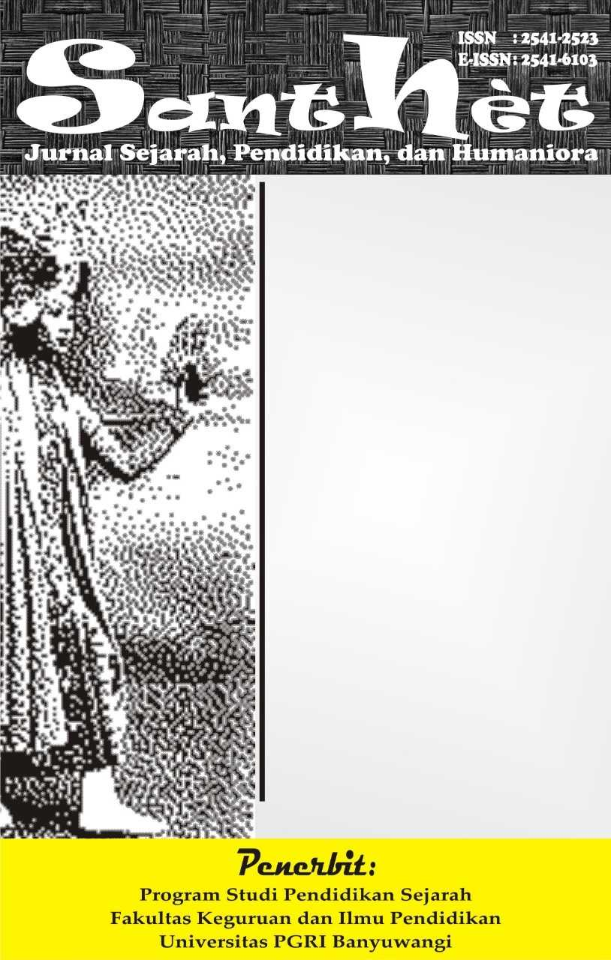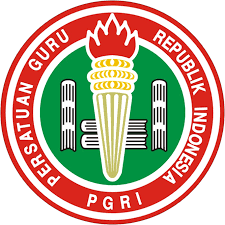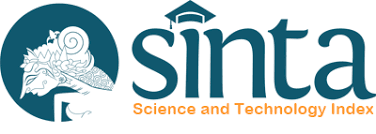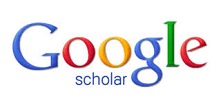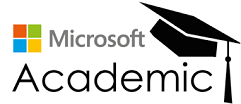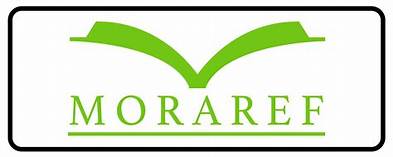MUSEUM-BASED HISTORY LEARNING: RELICS OF THE PRE-LITERACY PERIOD IN INDONESIA IN NORTHERN JAVA AS A LEARNING RESOURCE
Pembelajaran Sejarah Berbasis Museum : Peninggalan Masa Praaksara Indonesia di Jawa Bagian Utara sebagai Sumber Pembelajaran
DOI:
https://doi.org/10.36526/santhet.v9i4.5646Keywords:
Patiayam Museum, Education, Learning ResourcesAbstract
History learning in schools is still dominated by conventional methods such as lectures and memorization, which has an impact on low student participation and the linkage between the material and historical reality. In fact, history is a science that is rich in the value of life if it is conveyed contextually and based on real evidence. Museums as cultural heritage preservation institutions have great potential as an authentic and interactive source of historical learning, especially in conveying historical material during the pre-literacy period. One example is the Patiayam Museum in Central Java, which stores important archaeological relics from the Pleistocene period. However, the use of museums in history learning in schools is still limited due to the lack of integration with the curriculum and the limited resources of teachers. Therefore, this study aims to examine the potential of museums, especially the relics of the preliterate period in the northern part of Java, as a source of contextual, relevant, and meaningful historical learning. The study also highlights the importance of collaboration between schools, governments, and museum managers in supporting learning based on local historical sources.
Keywords: Patiayam Museum, Education, Learning Resources
References
Ambrose, T., & Paine, C. (2012). Museum Basics (3rd ed.). London: Routledge.
Anderson, D. (2019). Learning in the museum: Interdisciplinary perspectives. Museum
Education Journal, 44(1), 10–22.
Ahmadi, A., & Sunarto, K. (2020). Local history literacy in strengthening education
character. Journal of Indonesian History Education, 8(1), 12–21.
Sangiran Ancient Human Site Preservation Center. (2019). Annual report of activities
preservation of the Patiayam Site. Title: The Battle of the Bulge.
Berns, R. G., & Erickson, P. M. (2001). Contextual teaching and learning: Preparing
students for the new economy (The Highlight Zone: Research @ Work No. 5).
National Dissemination Center for Career and Technical Education.
BPSMP Sangiran. (2019). Report on Patiayam Site Excavation and Analysis Activities.
Sangiran: Ancient Human Site Preservation Center.
Creswell, J. W. (2014). Research design: Qualitative, quantitative, and mixed methods
Approaches (4th ed.). Thousand Oaks, CA: SAGE Publications.
Creswell, J. W. (2016). Qualitative inquiry and research design: Choosing among five
Approaches (4th ed.). SAGE Publications.
Cunha, C. R., Mendonça, V., Moreira, A., Gomes, J. P., & Carvalho, A. (2025). Using virtual
reality in museums to bridge the gap between material heritage and the interpretation
of its immaterial context. arXiv preprint, arXiv:2501.12345.
Disparbud Kudus. (2012). Patiayam Museum: Traces of prehistoric life. Holy: Kudus
Regency Tourism and Culture Office.
Denzin, N. K., & Lincoln, Y. S. (2018). The SAGE handbook of qualitative research (5th ed.).
SAGE Publications.
Dewi, R. N., & Hapsari, I. (2023). Effectiveness of using scientific articles as media
Prehistoric History in High School. Journal of Educational History,
Learning 11(2), 133–145.
Falk, J. H., & Dierking, L. D. (2018). Learning from museums: Visitor experiences and the
The Making of Meaning. Rowman & Littlefield.
Grant, M. M. (2002). Getting a grip on project-based learning: Theory, cases and AndI
think that's a Meridian: A Middle School Computer Technologies Journal, 5(1), 17.
1–
Kurniawan, G. F., Ba'in, B., Hannan, A. M., Hanifah, F., & Naziya, I. (2023). Optimization
History teachers' skills in developing and utilizing models Innovative learning.
Journal of Community Service, 1(9)
Hapsari, I. D. (2020). Development of a History Learning Model Based on Local Wisdom
to Improve Student Character. Journal of Historical Education, 9(1), 1–12.
Hein, G. E. (1998). Learning in the Museum. London: Routledge.
Hooper-Greenhill, E. (1994). Museums and their visitors. London: Routledge.
Hooper-Greenhill, E. (2007). Museums and Education: Purpose, Pedagogy, Performance.
London: Routledge.
Hooper-Greenhill, E. (2017). Museums and education: Purpose, pedagogy, performance.
Routledge.
Hein, G. E. (2016). Progressive museum education: Examples from the 20th century. Journal
of Museum Education, 41(2), 101–108
Hidayat, R., & Fatmawati, F. (2021). Digital-based history learning: Model innovation
Blended Learning through the media of educational articles and videos. Journal of
Educational Innovation History, 8(2), 101–115.
Isjoni, 2007, History Learning in Education Units. Bandung: Alfabeta.
Istiqomah, R. A., & Sabardila, A. (2023). Utilization of scientific articles as media
Source-Based History Learning. Journal of History and Cultural Education, 8(1), 55–
67.
Istiqomah, R. A., & Sabardila, A. (2023). Integration of academic literature in learning
museum-based history. Journal of Education and History, 11(1), 22–34.
Istiqomah, N., & Sabardila, A. (2023). The use of museums as learning media Source-based
history. Journal of Indonesian History Education, 11(2), 145–157.
Istiqomah, R., & Sabardila, A. (2023). Museums as a Source of Contextual Learning in
History Lessons. Historical Journal, 24(1), 45–58.
Irawan, D. (2020). The Indonesian Karst Museum as a medium and source of development
History Material for Class X High School Prescriptive Period [Thesis, Sebelas Maret
University]. Sebelas March University.
Irawan, D. (2020). Historical literacy approach in learning through article study Museum. Journal of Historiography, 4(2), 97–108.
Karst
Ministry of Education and Culture. (2022). Independent Curriculum for Primary and
Secondary Education Levels. Jakarta: Ministry of Education, Culture, Research, and
Technology.
Kusumawati, I., & Yulianto, E. (2017). Source-based history learning on site Patiayam
archaeology as a medium for forming historical awareness. History Journal and
Culture, 11(2), 155–166.
Kole, J. (2015). Archaeological sites as educational resources: Enhancing student engagement
and historical thinking. Journal of Social Studies Education Research, 6(1), 45–61.
Cole, I. P., et al. (2024). Contextual learning model by utilizing the environment School as a
Source of Learning (p. 23). Journal of Academic Media.
Kolo, A. M., Lestari, D., & Nurhadi, T. (2024). Historical literacy in an educational
perspective Contextual: A study of the use of museum articles. Journal of History and
Culture, 9(2), 101–118.
Kolo, Y., Rismayanti, D., & Mulyadi, A. (2024). Article-based historical literacy strategy on
high school level. Journal of Education and Humanities, 12(1), 23–34.
Miller, A., & Lavin, F. (2007). But now I feel I want to give it a try: Formative assessment,
self‐esteem and a sense of competence. The Curriculum Journal, 18(1), 3–25.
Miles, M. B., & Huberman, A. M. (2009). Qualitative data analysis: A methods sourcebook
(3rd ed.) Thousand Oaks: SAGE Publications.
Moleong, L. J. (2017). Qualitative research methodology. Bandung: Remaja Rosdakarya.
Mustika, S. D. (2020). Interdisciplinary studies in history education: Integrating
archaeology and anthropology in the school curriculum. Journal of History and
Culture, 8(1), 45–58.
Nash, G., Crabtree, C., & Dunn, R. E. (2000). History on trial: Culture wars and the teaching
of the Stuart. Vintage.
Ningsih, A. S. (2019). The use of museums as a source of learning history in increase the
learning interest of high school students. Journal of Historical Education, 8(1), 45–
55.
Nurhadi, M. (2019). Decolonization of history education through a locality approach and
alternative narratives. Journal of History and Culture, 14(2), 89–104.
Nugraheni, D., & Ramadhani, F. (2022). Strengthening students' critical thinking skills
through Learning strategies based on historical articles. Journal of Historical
Education Horizon, 10(1), 45–60.
Patton, M. Q. (2015). Qualitative research and evaluation methods (4th ed.). SAGE
Publications.
Parry, R. (2020). Museums in a digital age. Routledge.
Putra, F. D., & Basri, W. (2023). Adityawarman Museum as a source of learning History of
IndonesiaCopyright © 2019 Widya Winayata.,11(1), 42–58.
Putra, A. A., & Basri, H. (2023). Scientific articles as a collection-based teaching resource
museum. Journal of Indonesian History Education, 7(3), 112–128.
Putra, R. A., & Basri, F. (2023). The Use of Scientific Articles as History Teaching Materials
based on local wisdom. Journal of Humanities Education, 10(3), 177–190.
Retnowati, A. (2017). Learning History Based on Artifacts: A Period Learning Strategy
Prescriptors at the Museum. Yogyakarta: Waves.
Rachmawati, N., & Suyahmo, R. (2020). The role of historical articles in growing
awareness of the preservation of local cultural sites. Journal of History and Cultural
Education, 7(1), 56–70.
Seixas, P., & Morton, T. (2013). The big six: Historical thinking concepts. Nelson Education.
Sumardjoko, B. (2017). Internalization of local cultural values in history learning based local wisdom. Journal of Indonesian History Education, 5(1), 45–56.
on
Santoso, B. (2021). Patiayam and the traces of prescription in Central Java. Semarang:
Arkeo Press.
Sanjaya, W. (2016). Learning strategies are oriented to the standards of the educational
process. Jakarta: Gold.
Sartono, I., & Wulandari, L. (2021). Integrative approach in history-based teaching
Source: Unify narrative, artifacts, and context. Journal of Social Education Studies,
9(2), 89–104.
Soedjono, R. P., Sartono, S., & Simanjuntak, T. (1981). Discovery of Homo erectus in
Patiayam and its implications for the distribution of ancient humans in Java.
Archaeological Bulletin, 3(2), 33–47.
Sugiyono. (2005). Educational Research Methods: Qualitative, Quantitative, and R&D.
Bandung: Alfabeta.
Sugiyono. (2018). Qualitative, quantitative, and R&D research methods. Bandung: Alfabeta.
Supriatna, N. (2016). Revitalization of History Learning through the Utilization of Local
Potential. Journal of History: Journal of History and History Education, 14(2), 110–
123
Suryana, D. (2019). Inquiry-based history learning in the museum environment. Journal
Education, 21(3), 102–113.
Surahman, A., & Indriastuti, R. (2022). Archaeology in history education: Alternatives A
museum and cultural site-based approach. Journal of Archaeopedagogy, 7(2), 133–
148.
Utomo, S. (2019). The use of the Patiayam Museum as a source of learning history in
Basic History Material for Class X Preliteracy of SMA Negeri 1 Mejobo Kudus
Thesis: Muria Kudus University.
Utomo, S. (2019). The effectiveness of the use of local history articles in history learning at
SMA Negeri 1 Mejobo. Journal of Historical Education Studies, 5(2), 78–89.
Wiggins, G. (1998). Educational assessment: Designing assessments to inform and improve
Student Performance. Jossey-Bass.
Wineburg, S. (2001). Historical thinking and other unnatural acts: Charting the future of
teaching the past. Temple University Press.
Wahyudi, R., Widianto, H., & Simanjuntak, T. (2010). Site excavation and research
Patiayam: An early record of the potential of ancient human sites in northern Java.
Yogyakarta: National Archaeological Center.
Wahyudi, S., Widianto, H., & Simanjuntak, T. (2010). Geological Studies and Archaeological
Findings at the Patiayam Site. Indonesian Archaeological Journal, 34(1), 55–74.
Widianto, H., & Simanjuntak, T. (1995). Human Evolution in Java: Recent Discoveries from
The Patiayam Site. Yogyakarta: UGM Press.
Widodo, A., & Pramesti, N. (2021). Historical thinking in history learning: Analysis The use
of articles based on archaeological data. Journal of Indonesian History Education,
9(1), 22–37.
Wulandari, R. A. (2021). Local environment-based history museums and learning:
Efforts to foster the identity and historical awareness of the younger generation.
Journal Education and Culture, 26(1), 75–88.
Yulianto, E. (2015). Homo erectus from the Patiayam site and its implications for the spread
ancient humans in Java. Journal of Archaeology, 35(1), 23–34.
Yulianto, E. (2016). The Potential of the Patiayam Site in learning prehistoric history in
schools intermediate. Archaeological Periodical, 36(1), 45–60.
Yulianto, E., & Santoso, D. (2017). Evolution and cultural context Homo erectus on the Site
Patiayam: A review of the article and the results of the excavation. Indonesian
Archaeological Journal, 39(2), 85–102.
Yulianto, A. (2019). The Role of the Museum as a Source of History Learning. Journal
Education and Culture, 24(3), 245–256.
Yulianto, R. (2019). The role of museums in learning history in the digital era. Journal
History Education, 7(2), 34–44.
Zed, M. (2004). Literature research method. Jakarta: Yayasan Obor Indonesia.

